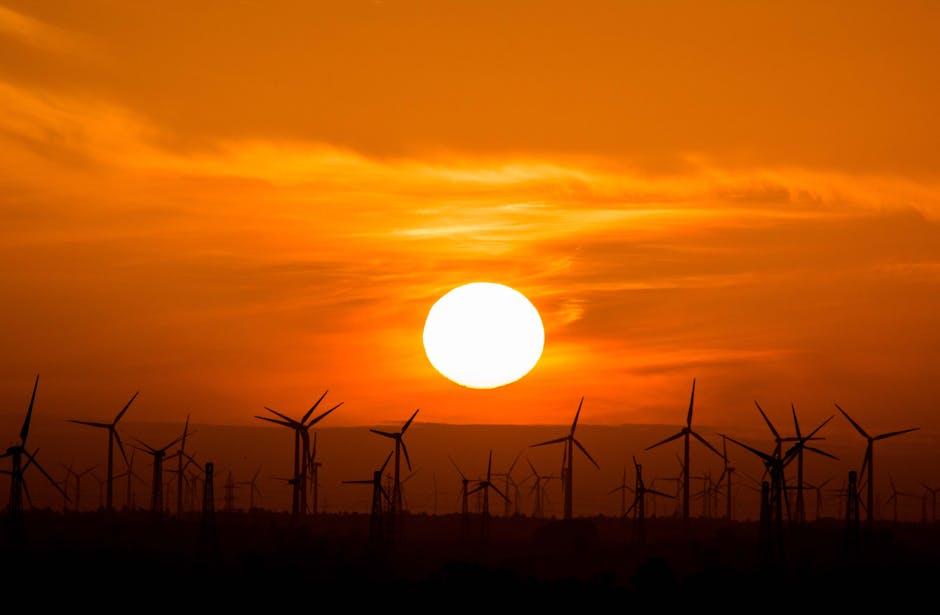No products in the cart.
Harnessing AI for Sustainable Wind Power: The Future of Turbine Maintenance
AI is reshaping wind power maintenance, requiring engineers to adapt and thrive in this evolving landscape. Discover the future!
Imagine standing atop a wind-swept hill, surrounded by towering turbines, their blades slicing through the air with a grace that belies their size. Each turbine represents not just a source of renewable energy, but a complex machine that requires constant care and monitoring. Now, picture a scenario where artificial intelligence (AI) plays a pivotal role in this maintenance, transforming how engineers approach their work. Welcome to the future of wind power, where data science meets turbine upkeep.
The rise of AI in wind power is not just a technological advance; it’s a paradigm shift. With wind energy projected to meet a significant portion of the world’s energy needs by 2050, the demand for efficient turbine maintenance is surging. According to a report from the International Energy Agency, wind power capacity could reach over 4,000 GW globally, underscoring the need for innovative solutions in this industry[1].

Engineers must now possess a hybrid skill set that combines traditional mechanical knowledge with a strong understanding of data analytics and machine learning.
Traditionally, wind turbine maintenance involved a reactive approach, where engineers would climb towers to inspect components, often after a failure had occurred. This method, while effective, is no longer sustainable in an age where every minute of downtime costs money and energy. Enter AI: a game-changer that can monitor turbine performance in real time, predict failures before they happen, and optimize maintenance schedules based on data-driven insights.
AI algorithms analyze vast amounts of data collected from sensors embedded in turbines. These sensors track everything from vibration levels to temperature fluctuations, sending real-time information to centralized systems. When anomalies are detected, AI can alert engineers, allowing them to intervene before a minor issue escalates into a major breakdown. This predictive maintenance strategy not only enhances turbine reliability but also significantly reduces operational costs.
However, the integration of AI into wind turbine maintenance does not come without challenges. Engineers must now possess a hybrid skill set that combines traditional mechanical knowledge with a strong understanding of data analytics and machine learning. This shift is redefining educational pathways in engineering. Universities and technical colleges are beginning to offer specialized programs that equip students with the necessary skills to thrive in this new landscape.
Take, for example, the case of Sarah Thompson, a recent graduate who landed her dream job as a wind turbine technician. “I always loved working with my hands, but I realized that understanding data was going to be crucial,” she shares. Sarah pursued a degree in renewable energy engineering, which included coursework in AI applications. Today, she uses data analytics daily, leveraging AI tools to monitor turbine health and ensure optimal performance.
Moreover, the implications of AI in wind power extend beyond operational efficiency. As companies look to harness this technology, they are also faced with the responsibility of ensuring that their workforce is adequately trained. This creates a unique opportunity for continued education and professional development, allowing workers to upskill and adapt to the evolving industry landscape.
From an industry perspective, companies are investing heavily in AI technologies to remain competitive. GE Renewable Energy, for instance, has developed its AI platform, Digital Wind Farm, which enables real-time analysis and management of wind farms. Such advancements reflect a broader trend where data-driven decision-making is becoming the norm in energy sectors. The ability to harness AI effectively isn’t just a competitive advantage; it’s becoming a necessity for survival in a rapidly changing market[2].
This creates a unique opportunity for continued education and professional development, allowing workers to upskill and adapt to the evolving industry landscape.
Nevertheless, the transition to AI-powered maintenance raises questions about job displacement. Will machines replace human engineers? Experts argue that while AI will automate certain tasks, it will also create new roles that focus on data interpretation and system management. The future workforce in wind power will likely consist of professionals who can bridge the gap between engineering and data science, making them invaluable assets in a tech-driven industry.
Looking ahead, the potential for AI in wind power is vast. As technology advances, we can expect even more sophisticated predictive models that not only enhance maintenance but also improve the design and efficiency of new turbines. The challenge will be ensuring that the workforce is prepared to meet these demands. Educational institutions, industry leaders, and policymakers must collaborate to create training programs that align with the evolving needs of the sector.
As the world grapples with climate change and the urgent need for sustainable energy solutions, the integration of AI in wind power represents a beacon of hope. It’s a reminder that innovation and human ingenuity can work hand in hand to create a cleaner, more sustainable future. For the engineers stepping into this brave new world, the journey is just beginning.











